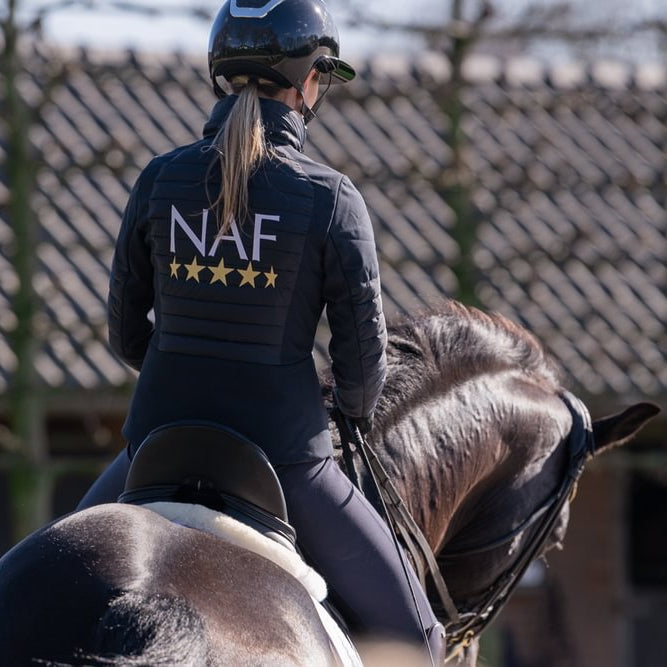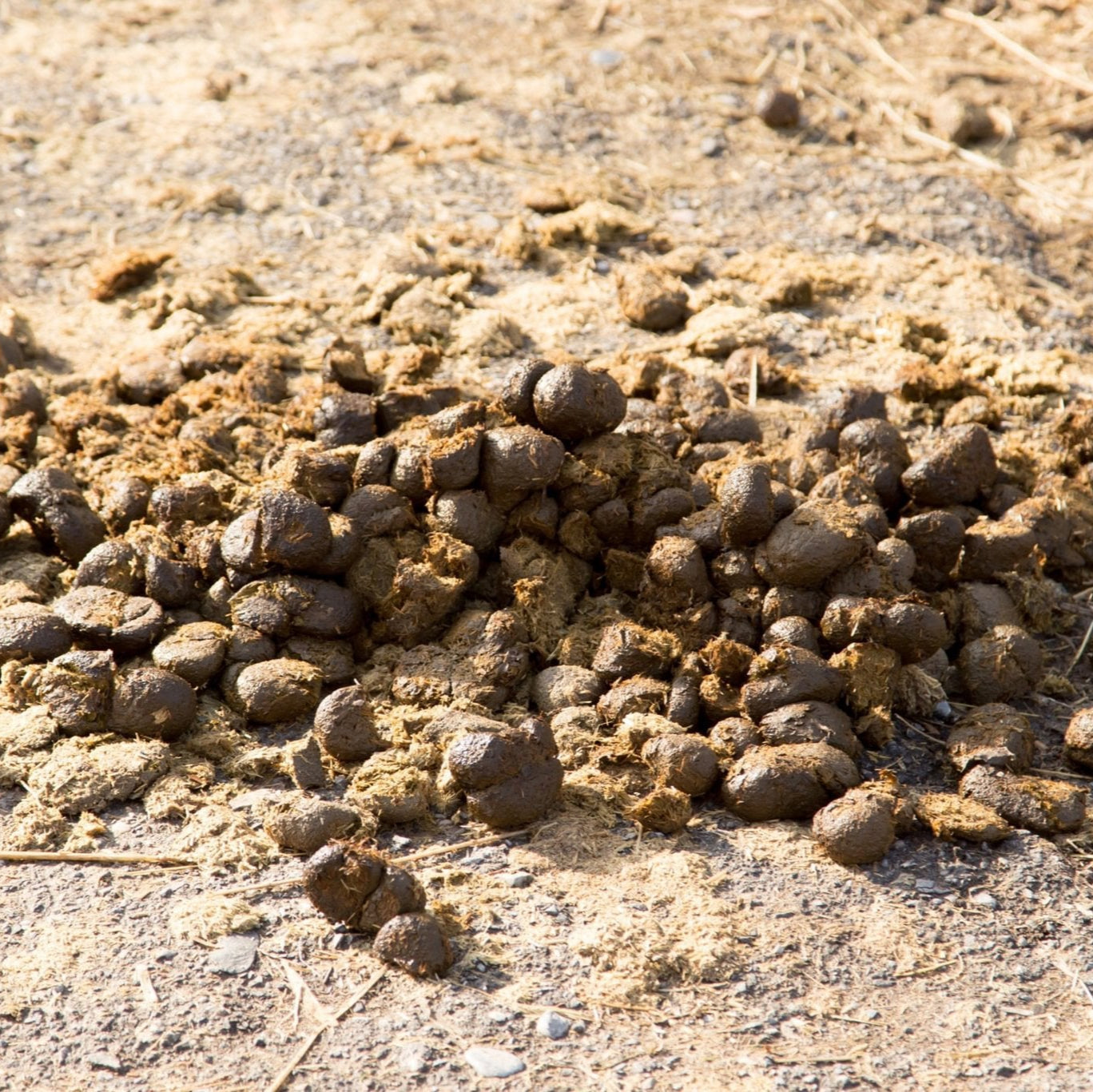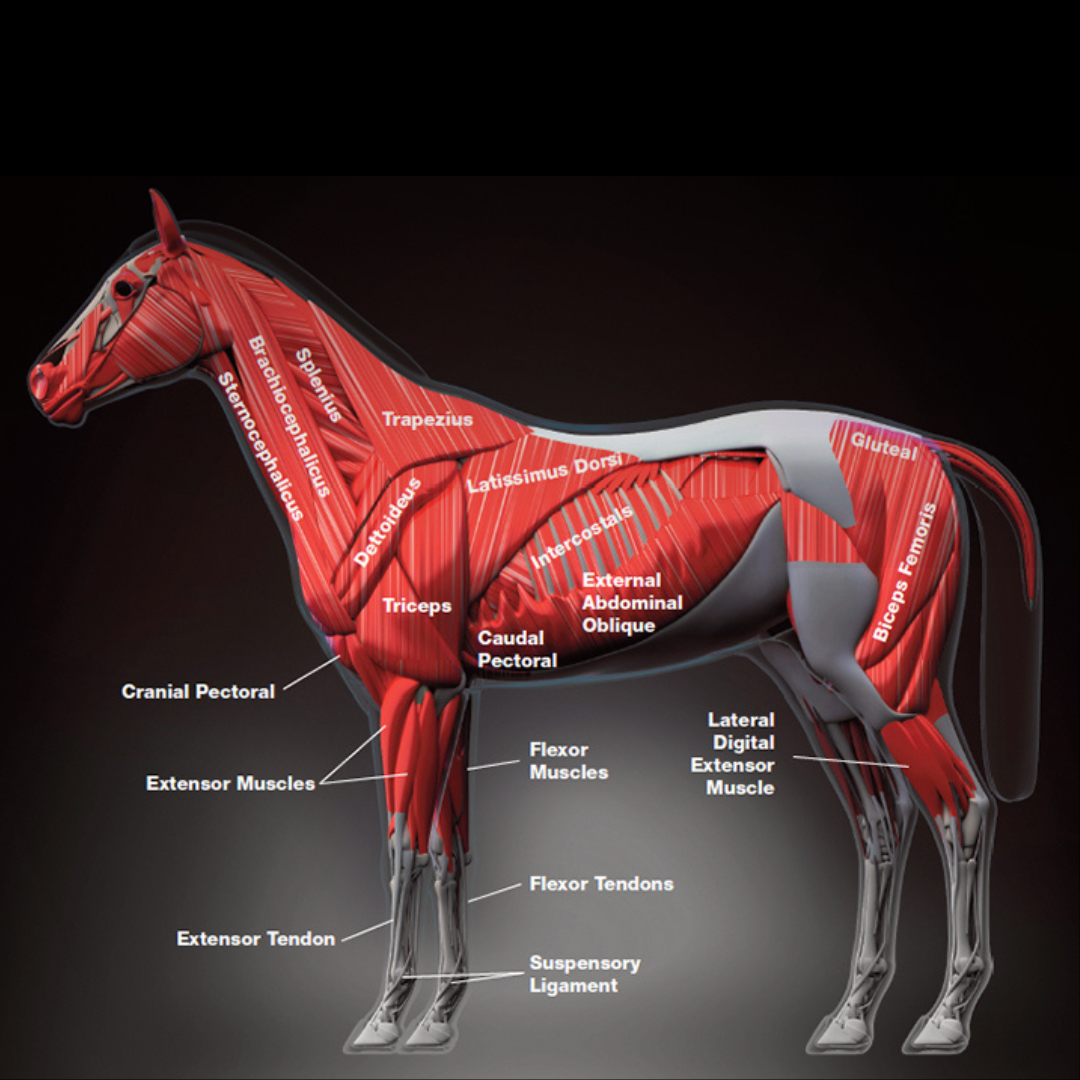As autumn turns to winter, colder mornings, clipped coats, and more stabling can leave horses stiff. Grooms, who handle tacking up, lunging, and daily care, often notice this first, making careful management and good nutrition essential.
Why Winter Warm-Up Matters
Cold weather affects muscles, just as it does for people. A horse coming straight out of the stable into work is more likely to feel tight, stiff, or resistant. Colder temperatures slow circulation, making it harder for joints and muscles to function freely until they’ve loosened up. The result? Shorter strides, more resistance, and a greater risk of strain or even injury.
That’s why a longer, careful warm-up is essential in colder months. Horses that are walked, stretched, and eased into work, move more freely and perform better than those rushed straight into harder exercise.
Recognising Muscle Issues
Awareness of equine muscle diseases has grown. Conditions once grouped as ‘tying-up’ or ‘azoturia,’ such as PSSM (Polysaccharide Storage Myopathy, affecting muscle energy storage) and MFM (Myofibrillar Myopathy, involving structural muscle fibre issues), are now better understood.
Clinical Signs
-
Muscle pain
- Short, choppy stride – particularly hindquarters
- Tension or cramping in large muscle groups
- Muscle cramping / tying-up
- Sudden stiffness during or after exercise
- Excessive sweating
- Poor performance
- Inconsistent gait / poor transitions
- Reluctance to work
- Refusal to go forward / resistance to saddling
- Exercise intolerance
- Tires easily, particularly noticed in warm-up or light work
- Dark / coffee coloured urine
- Indicates acute issue; consult your vet
-
Abnormal gait or weakness
- Muscle trembling or twitching
- Stumbling or dragging hind limbs
Overview of Common Myopathies
| Acronym | Full Name | Key Feature | Common in Breeds |
| PSSM 1 | Polysaccharide Storage Myopathy Type 1 | GYS1 genetic mutation | Quarter horses, Draft breeds, Exmoor, Connemara |
| PSSM 2 | Polysaccharide Storage Myopathy Type 2 | No gene mutation. Structural | Warmbloods, Arabs, |
| MFM | Myofibrillar Myopathy | Cell protein aggregation | Warmbloods, Arabs, |
| RER | Recurrent Exertional Rhabdomyolysis | Stress / exercise induced | Thoroughbreds, Standardbreds, Arabs |
| MH | Malignant Hyperthermia | RYR1 gene mutation. High fever | Quarter horses, Appaloosas |
| HYPP | Hyperkalemic Periodic Paralysis | Sodium channel defect | Quarter horses – ‘Impressive’ stallion lines |
| AM | Atypical Myopathy | Hypogylcin ingestion | No recognised breed trait. |
Exercise Management for Muscle Health
For horses prone to muscle issues, consistency is everything. Sudden changes in workload are a common trigger, so regular, gentle exercise is far safer than alternating between inactivity and intense work.
-
PSSM 1 & 2, RER
(Recurrent Exertional Rhabdomyolysis): Benefit from very regular exercise, including walking on rest days. - MFM horses: Often respond well to rest days, e.g. three days of work followed by two rest days.
Turnout is essential for all. Even limited turnout gives horses the chance to self-exercise and keeps muscles supple.
Feeding for Muscle Support
Diet plays a major role in managing muscle health. For conditions like PSSM and RER, a high-fibre, low-starch diet is key, with added oil for energy rather than cereals. This approach also supports digestive health and calmer behaviour across the board, so it’s a smart choice for all horses.
Supplementary Support
Natural Vitamin E: A powerful antioxidant essential for muscle health. Look for natural (RRR) forms, as they are far more effective than synthetic versions. Horses may need 2,000–6,000 IU daily depending on their workload and condition.
SOD (Superoxide Dismutase): The bodies primary antioxidant, now can be sourced from a unique variety of melon that works with Vitamin E to maintain healthy muscle cells.
Supporting Joints and Muscle Strength
Winter work can be hard on both joints and muscles, especially with less turnout and colder weather. Nutritional support makes a real difference:
NAF Superflex: Provides targeted joint support with the right ratios of joint nourishment, helping joints feel comfortable and supple during the colder months.
NAF M Power: Supports lean muscle development and recovery, ideal for performance horses needing strength and resilience.
Together, they help keep horses feeling sound, strong, and ready for work, even when winter conditions make things tougher.
In Summary
For grooms, winter means longer warm-ups, careful cool-downs, and watching for stiffness or muscle issues. Consistent routines, smart exercise, and good nutrition supported by NAF Superflex for joints and NAF MPower for working muscles, help keep horses supple, strong, and trainable. Working with your vet to diagnose any muscle issues and tailor management and diet ensures the best long-term outcome.
Selected References
- Hoff HE & Springer C (2022) PSSM in Connemara ponies: A report on preliminary findings. The Connemara Pony PSSM Research Group.
- Isgren CM, Upjohn MM, Fernandez-Fuente M, Massey C, Pollott G, Verheyen KL, Piercy RJ. (2010)Epidemiology of exertional rhabdomyolysis susceptibility in standardbred horses reveals associated risk factors and underlying enhanced performance. PLoS One. Jul 14;5(7):e11594. doi: 10.1371/journal.pone.0011594.
- McCue ME et al (2010). Estimated prevalence of the Type 1 Polysaccharide Storage Myopathy mutation in selected North American and European breeds. Anim Genet. Dec;41 Suppl 2:145-9.
- Valberg S & McPhail A (2022) Updates on feeding horses with type 2 polysaccharide storage myopathy; different approaches for different breeds. Proceedings of EWEN, Cirencester.



